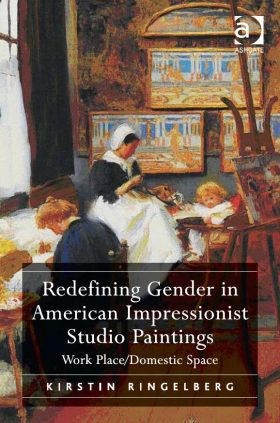For decades, art historians ignored the work of impressionist painters who used their talent to paint scenes of domestic life in 19th century America. A forthcoming book by associate professor Kirstin Ringelberg argues that it’s time for scholars to reexamine these paintings, which depict a more complex story of the time normally seen to show women simply as “decorative” objects.

Redefining Gender in American Impressionist Studio Paintings: Work Place/Domestic Space focuses on studio paintings by American artists William Merritt Chase and Mary Fairchild MacMonnies Low. The book from Ashgate Publishing Company expands on research first conducted for Ringelberg’s doctoral dissertation at the University of North Carolina-Chapel Hill in 2000.
“If you look at the more commonly studied paintings, you begin to see women are psychologically or physically trapped,” Ringelberg said. “Women artists were representing other women this way because that was part of their own experience.”
Ringelberg’s interest in art historiography – the study of the way history is written and researched – was a driving force in her project. As she discovered during her graduate studies, with few exceptions, art historians traditionally studied work by male impressionist painters because of the avant-garde nature of their work depicting cafes, bars, brothels and city streets.
After studying the work of Griselda Pollock, a prominent art historian, Ringelberg decided to focus on paintings about domesticity and its role in the artist’s depictions, rather than those urban spaces.
“Most of the women artists who painted in the impressionist period were proper bourgeois ladies, middle class and sometimes upper class ladies, and they wouldn’t go to these places,” Ringelberg said. “By saying the importance of impressionist painting was based on sites women couldn’t go to unless they were hookers or dancers, meant that female impressionists couldn’t paint scenes the way we were defining them.”
The professional lives of women artists have rarely been considered important subject matters from the impressionist period, Ringelberg said. She hopes her book helps to change that perception.

“Those studio pictures actually tell us a lot, and they’re important in that sense,” she said. “If you look at these paintings, you see all kinds of things that are part of the new modern world, but you have to look at all the paintings. You can’t just look at paintings of cafes.”
Ringelberg joined the Elon faculty in 2003 as the university’s first full-time art historian. She helped developed an art history minor in her first year, the basis of which would later form Elon’s current art history major. Elon College, the College of Arts and Sciences, honored Ringelberg in 2008 with an Excellence in Teaching Award.
She contributes to the Women’s and Gender Studies, American Studies, and Asian Studies programs. In 2003, Ringelberg also helped with the creation of the Art History Speakers Series, which brings world-renowned art historians to campus several times each year.
“She wants people to know how dynamic the discipline is, and how interconnected the discipline is,” said assistant professor Evan Gatti, a colleague in the Department of Art and Art History who praised Ringelberg’s book. “Her book will be widely read by art historians but I think people outside of art history will also read it, and should.
“There are people working on similar topics who haven’t yet read her work and it needs to be part of the bigger conversation.”


